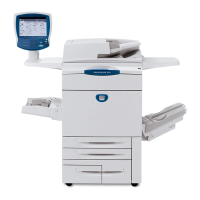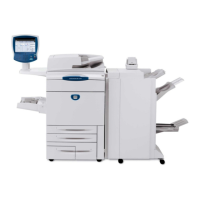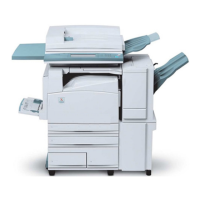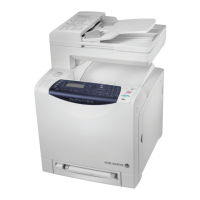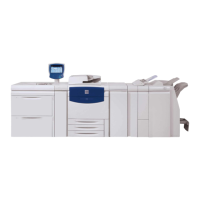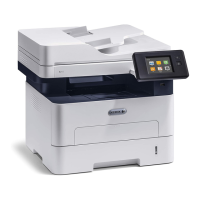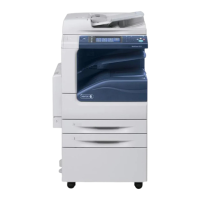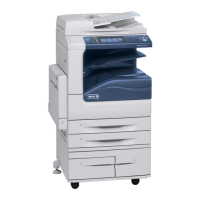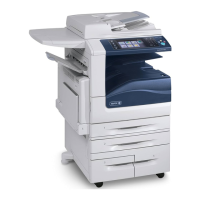1/05
10-153
DocuColor 12/DCCS50
Offset Catch Tray (OCT), Mailbox/Sorter Operation.
Principles of Operation
Reissue
Offset Catch Tray (OCT)
The Offset Catch Tray (OCT) is an optional accessory. The OCT can be attached directly to the
machine or to the Mailbox/Sorter. If connected to a Mailbox/Sorter, the OCT replaces the stan-
dard non-offsetting catch tray.
The OCT is used to compile copy output into a single stack or to provide offsetting stacks onto
a s
ing
le tray. The OCT does not provide offsetting for paper sizes of 12x18” or larger.
The OCT can attach to a machine or to the Mailbox/Sorter by two (2) Thumb Screws. A multi-
pin plug connect
s the OCT to the machine or the Mailbox/Sorter for communications and DC
power needs.
A +24 VDC bi-directional motor shifts the OCT toward the front of the machine or toward the
back of
the m
achine when performing the offset stacking function. The OCT straight stack or
“home” position is with the catch Tray toward the front of the machine.
Two (2) sensors monitor the offset paper stacking function:
• The Offset Home Sensor indicates when the OCT is in the straight stack or “home” posi-
tion.
• The Offset Position Sensor indicates when the OCT is in the offset position.
An OCT Motor moves the tray between the two positions. The OCT Motor is controlled by dis-
crete control lines from the IOT CPU and Drive PWBAs.
Single stacks of copy are discharged within a paper ali
gnment of approximately 20 mm of
“scatter.” Offset stacks will have approximately 10 mm offset between sets of stacks.
When copy output is to be stacked in offsetting piles, the first stack is always placed with the
OCT
in the Home Position. Additional stacks are placed with the tray alternating between the
Home and Offset Positions. When a copy job is complete, the OCT always returns to the Home
Position.
The OCT can hold 500 sheets of standard weight paper. When the tray capacity is reached, the
F
ul
l Stack Sensor is activated, and a status line is asserted to the IOT CPU PWBA.
Mailbox/Sorter Operation.
This device can operate as either a Sorter or as a Mailbox, depending upon what type of
machine it is attached to. Refer to Overview at the beginning of this Chapter for information on
the Sorter and Mailbox functionality with the different machines.
Sorter Operation Overview
The Sorter can collate copy output in the following modes:
• Stack mode into bins (1,1,1... 2,2,2... 3,3,3...etc.)
• Sort mode into bins (1,2,3... 1,2,3... 1,2,3...etc.)
• Straight stack into the Catch Tray
• Offset stack into the optional OCT, if connected
The user selects the type of output on the UI touch pad of the copier. Depending upon the copy
mat
erial
used or selected, the control logic will determine if the user selection is valid (i.e. the
selected paper weight is within the operational range of the Sorter).
Mailbox Operation Overview
The Mailbox can collate copy output in the following modes:
• Sort mode into bins assigned to users or group addresses (1,2
,3... 1,2,3... 1,2,3...etc.)
• Straight stack into the Catch Tray when one or more mailbox bins are full.
• Offset stack into the optional OCT, if connected
The system administrator for the printer network assigns the addresses used for the Mailbox
fun
ction. The address data are stored in the NVM associated with the IOT CPU PWBA.
When the machine is used as a networked printer, the
user sends a print job to the machine
from a workstation terminal to the Digital Front End (DFE). The address is sent to the IOT CPU
PWBA, which uses data stored in the NVM to correlate the address to a bin. The bin address is
then sent to the Mailbox/Sorter Control PWBA, which activates the appropriate motors and
solenoids to route the prints into the correct bin.
When the machine is configured as a copier/prin
ter and
is being used as a copier, the local
user can only send the job to the catch tray. If the OCT is attached, the user can choose to sin-
gle stack or offset stack the job.
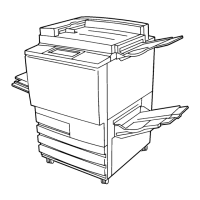
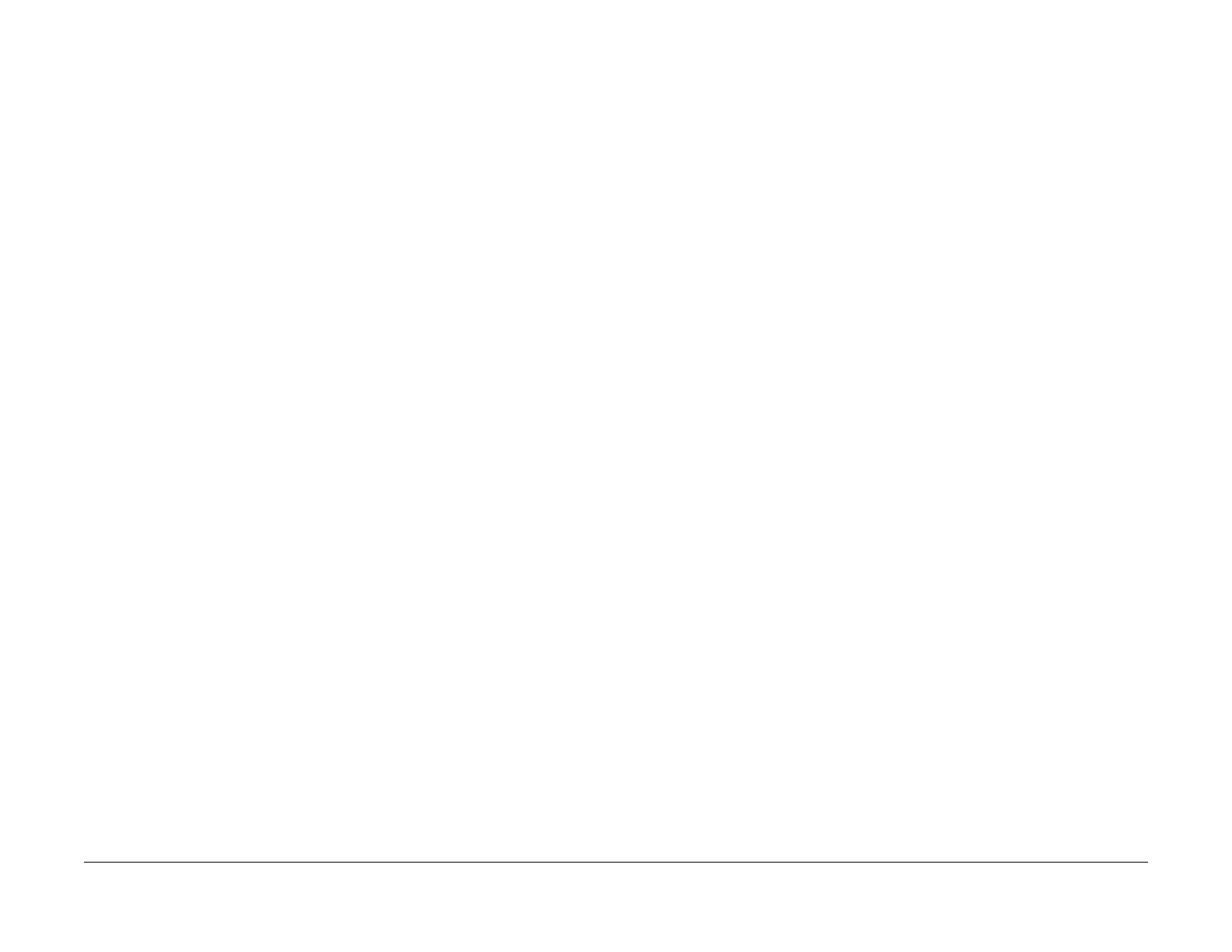